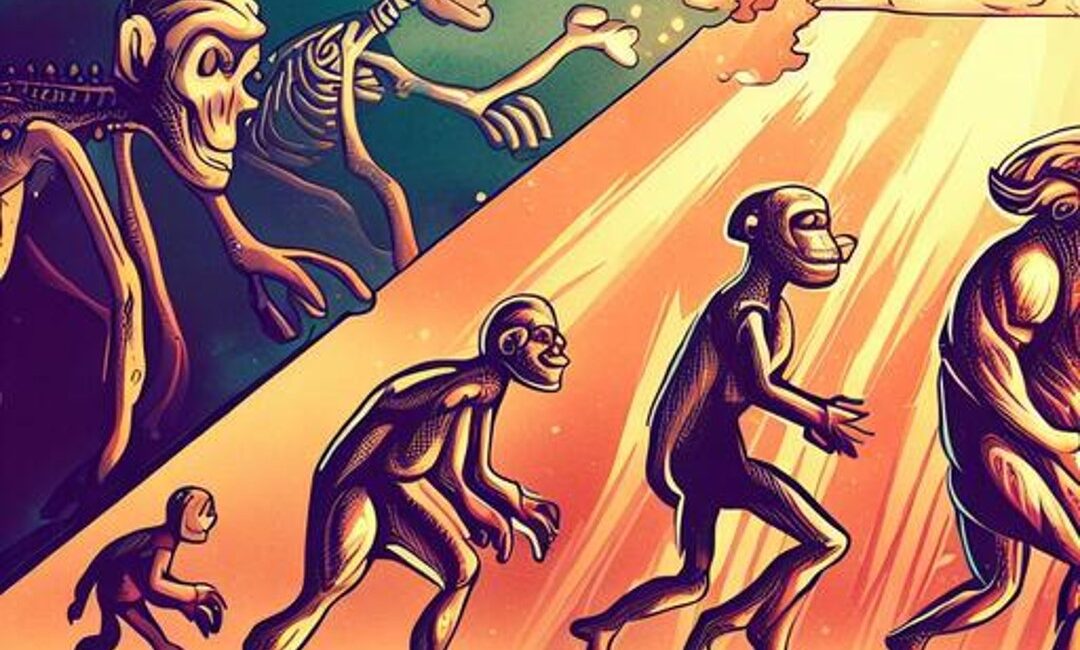The Theory of Evolution stands as a monumental scientific breakthrough that has revolutionized our understanding of life on Earth. Proposed by Charles Darwin in the 19th century, this captivating theory offers a profound explanation for the breathtaking diversity and intricate complexity of the living world. In this blog post, we embark on a captivating journey through time to unravel the foundations and key concepts of the Theory of Evolution, shedding light on its profound implications for our comprehension of the natural world.
- Evolution by Natural Selection: At the heart of the Theory of Evolution lies the concept of natural selection—a remarkable mechanism that molds populations over time. By favoring traits that enhance an organism’s survival and reproduction, nature selectively shapes the genetic composition of species. This section delves into the core principles of natural selection and demonstrates how it drives the adaptation and diversification of life forms.
- Fossil Record: The Keys to Ancient Life: Fossils serve as windows into the past, offering glimpses of long-extinct species and providing crucial evidence for the theory’s validity. This section explores the fascinating world of paleontology, showcasing how the fossil record offers a tangible record of life’s evolution over millions of years. From the discovery of ancient hominids to the documentation of transitional fossils, we uncover the awe-inspiring revelations made possible by fossilization.
- Genetic Inheritance: The Blueprint of Evolution: The Theory of Evolution is intricately intertwined with genetics. Through the mechanism of genetic inheritance, traits are passed down from generation to generation, acting as the raw material for evolutionary change. This section explores the basics of genetics, including genetic variation, mutations, and the role of DNA. By delving into the molecular underpinnings of evolution, we gain a deeper appreciation for the mechanisms that drive the ever-changing tapestry of life.
- Speciation and Biodiversity: The Theory of Evolution provides profound insights into the origin and proliferation of species. This section sheds light on the process of speciation, highlighting how new species arise through various mechanisms such as geographic isolation, adaptive radiation, and reproductive barriers. By examining remarkable examples of biodiversity, from the Galapagos Islands to the African savannah, we witness the endless array of life forms shaped by evolutionary processes.
- Evolutionary Biology in the Modern World: Beyond its historical and scientific significance, the Theory of Evolution continues to be a vibrant field of research with far-reaching applications. This section explores contemporary studies in evolutionary biology, such as antibiotic resistance, viral evolution, and conservation biology. By understanding how evolution shapes our present and future, we gain valuable insights into addressing pressing challenges facing humanity and the natural world.
The Theory of Evolution represents a monumental milestone in our quest to comprehend the intricate workings of life. It offers a compelling narrative that ties together the past, present, and future of all living organisms. By peering into the fascinating world of natural selection, fossils, genetics, speciation, and modern evolutionary biology, we are humbled by the richness and interconnectedness of the natural world. The Theory of Evolution stands as a testament to the power of scientific exploration and continues to inspire curiosity and wonder, inviting us to appreciate the breathtaking journey of life on Earth.

